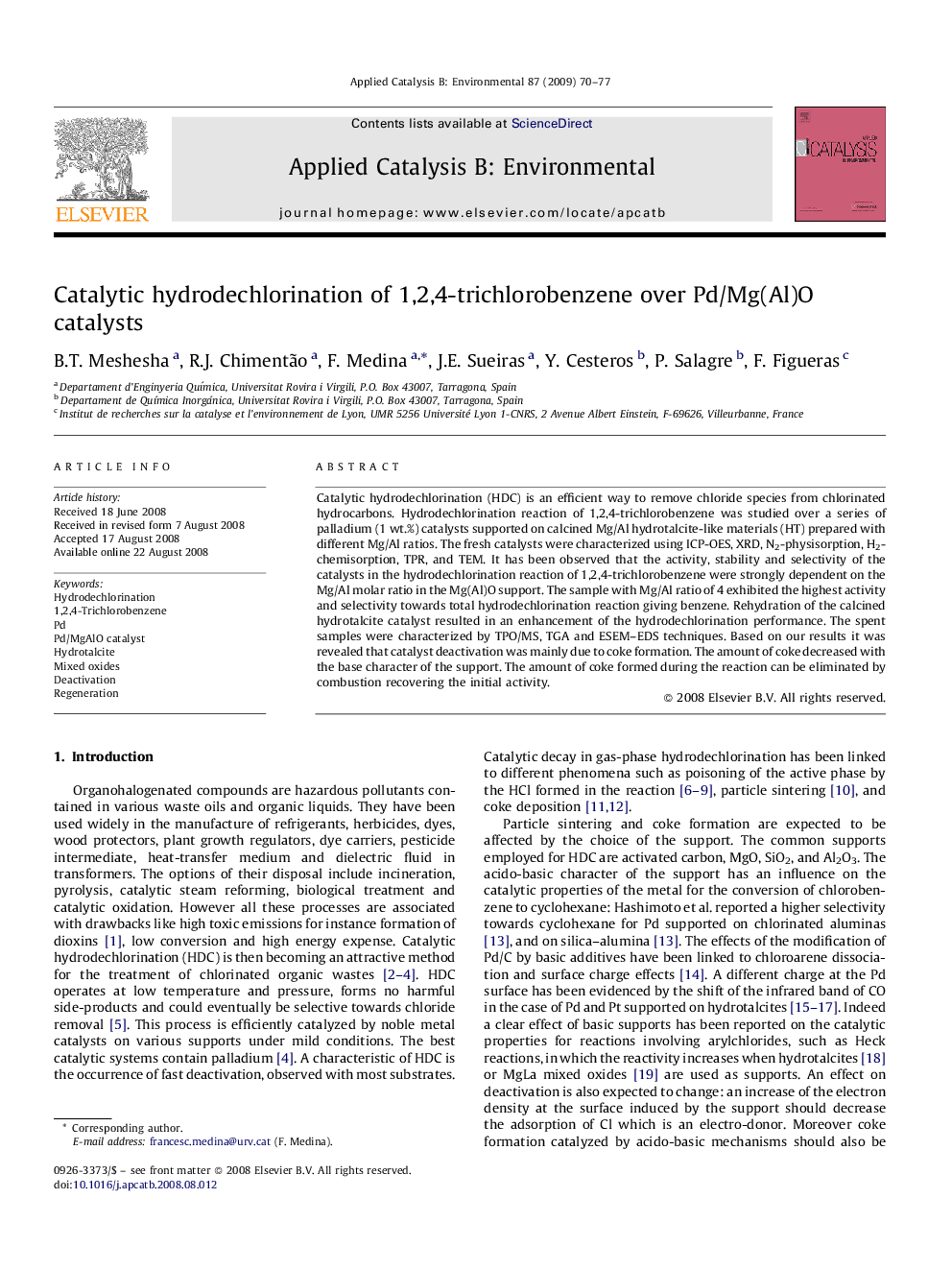| Article ID | Journal | Published Year | Pages | File Type |
|---|---|---|---|---|
| 48111 | Applied Catalysis B: Environmental | 2009 | 8 Pages |
Catalytic hydrodechlorination (HDC) is an efficient way to remove chloride species from chlorinated hydrocarbons. Hydrodechlorination reaction of 1,2,4-trichlorobenzene was studied over a series of palladium (1 wt.%) catalysts supported on calcined Mg/Al hydrotalcite-like materials (HT) prepared with different Mg/Al ratios. The fresh catalysts were characterized using ICP-OES, XRD, N2-physisorption, H2-chemisorption, TPR, and TEM. It has been observed that the activity, stability and selectivity of the catalysts in the hydrodechlorination reaction of 1,2,4-trichlorobenzene were strongly dependent on the Mg/Al molar ratio in the Mg(Al)O support. The sample with Mg/Al ratio of 4 exhibited the highest activity and selectivity towards total hydrodechlorination reaction giving benzene. Rehydration of the calcined hydrotalcite catalyst resulted in an enhancement of the hydrodechlorination performance. The spent samples were characterized by TPO/MS, TGA and ESEM–EDS techniques. Based on our results it was revealed that catalyst deactivation was mainly due to coke formation. The amount of coke decreased with the base character of the support. The amount of coke formed during the reaction can be eliminated by combustion recovering the initial activity.
